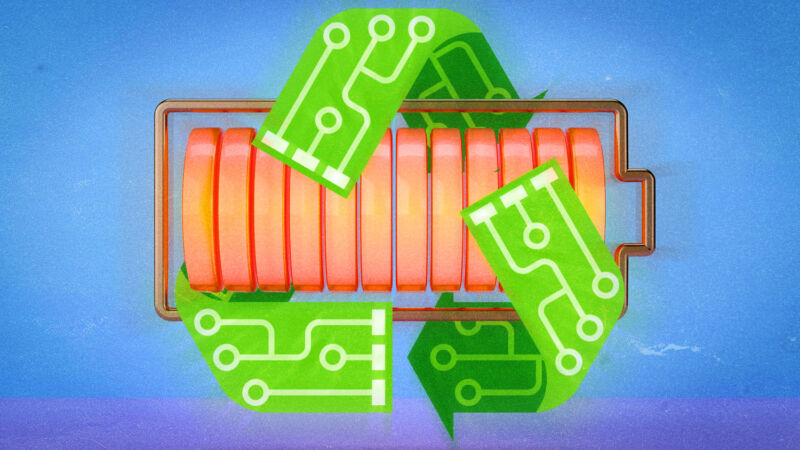♻️🔋 —
The materials create a more porous structure for the ions to negotiate.
Jonathan M. Gitlin
–

The problem of what to do with old batteries comes up in many discussions about the pros and cons of electric cars. Most people’s first preference is to reuse them, repurposing the cells for a second life as stationary storage.
But at some point, even those batteries will reach their end of life, and recycling them makes sense, given concerns over sourcing raw materials for fresh batteries to take their place. It’s even possible that using recycled materials might make a better battery, according to a study published in the journal Joule.
Recycling a complicated construction like a battery cell is a difficult task, but it’s a potentially lucrative one, which means it’s of interest to academia and industry. The study in Joule, led by Professor Yan Wang at Worcester Polytechnic Institute, looks at the performance of lithium-ion cells that have cathodes made from nickel, manganese, and cobalt recovered from other cells.
The recycling process
To begin with, spent lithium-ion batteries “of any type and state” are discharged before being cut up, shredded, and sieved. The cases, wires, plastics, and circuit boards are removed for recycling, leaving a black mass that contains graphite, the cathode materials, and some other metal residues. Next, different materials are removed from the mass via leaching and filtering, eventually leaving the nickel, manganese, and cobalt ions.
About 90 percent of these three elements are recovered, and once the relative amount of each has been determined, fresh nickel, manganese, and cobalt sulfates are added to reach the final desired ratio for whichever type of cell is being built. After a little more treatment and several hours of heating, the recycled cathode powder is ready to be used in a new battery cell.
Recycled outperforms new?
Wang and his colleagues tested the recycled cathode powder in a number of cell types: coin, single-layer pouch, 1 Ah, and 11 Ah. They compared the performance of the different types to similar cells made with “fresh” cathode powder.
Cells using recycled cathodes were then put through an array of tests, where they performed almost identically to cells using fresh cathode materials. There was only one notable exception: The cells using recycled cathode materials lasted up to 53 percent longer.
1 Ah cells were repeatedly charged (1C) and discharged (2C) to find out how many cycles they could withstand before beginning to degrade. The control cells degraded to 80 percent of their original capacity after 3,150 cycles and to 70 percent capacity after 7,600 cycles. At this point, they were done. Meanwhile, the recycled material cells could go through 4,200 cycles before they had degraded to only 80 percent state of charge. They reached an “astonishing” 11,600 cycles before 70 percent was the best they could do.
When the researchers looked at the recycled cathode powder using a scanning electron microscope, they discovered that the particles were quite similar, but the recycled particles had larger pores in their centers compared to control particles. Additionally, recycled powders were a bit less brittle. The more porous structure makes it easier for lithium ions to diffuse through, and because it’s more flexible, it’s more resistant to cracking after repeated charging and discharging.
Batteries using recycled cathode materials might start appearing soon. In early 2022, a startup Wang co-founded, called Battery Resources, will open its first plant to recycle cells in the US, with plans to add two more in Europe by the end of next year. The company says that by the end of 2022, it should be able to recycle 30,000 tonnes of batteries a year.
Joule, 2021. DOI: 10.1016/j.joule.2021.09.005 (About DOIs)

